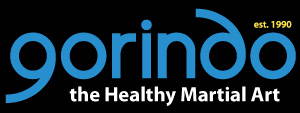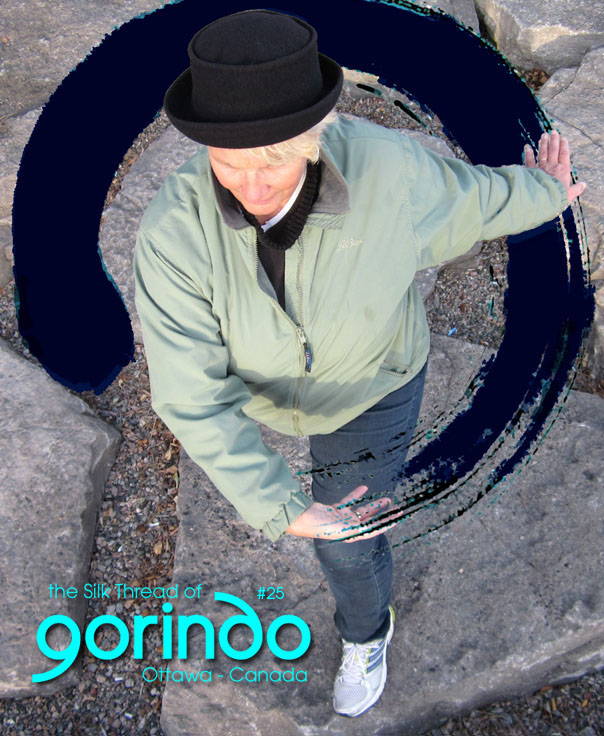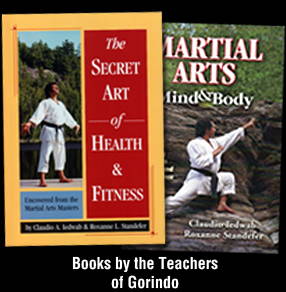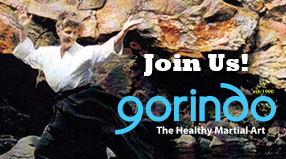The Silk Thread of Gorindo - Ottawa - Canada
Issue 25
- Keeping in Line with Your Spine (Part 3)
- Keeping in Line with Your Spine - Exercises
Cover Roxanne Standefer Sensei 'Air Enso' - Photo by ©2012 Claudio Iedwab
Keeping in Line with Your Spine (Part 3)
< read Part 2 (previous issue)
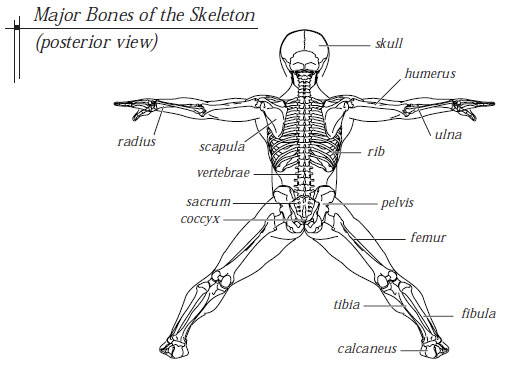
Many modern exercise systems can lead to overdevelopment in one area of the body to the neglect of others, and this can throw our alignment out of true. Bodybuilding, and spot exercises that focus only on attractive muscular appearance, can interfere with flexibility and be a source of repetitive stress injury. Those who have become obsessed with a flat stomach and purchased the latest abdominal exercise contraption can throw their necks or backs out of alignment due to a lack of muscular support, or aggravate problems with discs or vertebrae because of grinding or twisting in bad positions. This is most unfortunate for those who are just beginning an exercise program and have a genuine interest in getting in shape. The tendency to want to make up quickly for a long period of inactivity contributes to failure. It is important to understand how interconnected the body’s muscles, bones, ligaments, and tendons are, and how to train them and correct weaknesses in a gradual way.
Sedentary people have usually let their abdomens sag, and developed lower back pain because the stronger muscles of the back have contracted and tilted the pelvis down and back. Those who are more active, especially runners and cyclists for example, may feel they lack flexibility in their lower back while stretching, when in fact it is the hamstring muscles of the legs that are too tight, inhibiting the ability to bend over to touch the ground. Alignment of the pelvis and hips can often be thrown out of whack by the psoas muscles, which run from the top front of the leg through the hip to the sacrum at the base of the spine. Any of these situations can cause back or neck pain, spinal degeneration, and inhibit mobility, but are technically not conditions of the spine at all. However, long-term imbalance and misalignment can indeed cause serious problems in the spine if not addressed.
Fortunately, there has been a shift away from the traditional medical treatment model of bed rest for back problems. With upwards of eighty percent of Americans suffering lower back pain at some time, supervised exercise has proven to speed dramatically the rate of recovery and prevent the recurrence of acute episodes. These painful seizures can be frightening and are often triggered by simple mistakes. When a nerve has been pinched by a vertebra out of line, or worse, by the pressure of a disc that has bulged or ruptured, the muscles that run the length of the spine will seize and “lock down” to protect the integrity of the spinal column and the essential nerve pathways running inside it. This defense reaction can be much more painful and last longer than the injury which caused it. The period of immobilization this causes is often an overreaction on the part of these muscles, but the body takes no chances when it comes to protecting its essential networks.
In the Eastern modality of medicine, most treatment therapies begin with regaining the proper alignment of the spine, and many methods are used to achieve this. Shiatsu (digital pressure massage) and sotai (gentle manipulation and natural exercise), for example, seek to unlock tension, rebalance the arrangement of muscles and bones, and stimulate vital energy that can aid in healing and supporting the active healthy state. Acupuncture and acupressure also work from the body’s natural strengths.
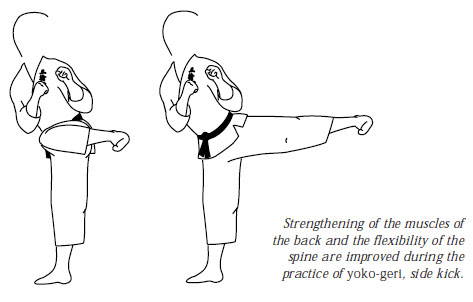
Although martial training is about self-defense and prevention of injury, and does not primarily seek to be a healing art, it can be helpful in the process of recovery from injury after professional diagnosis and treatment. Because martial training incorporates evaluation and self-awareness as well as the feedback of a teacher, it blends particularly well with Eastern health practices. Their emphasis is on the body, mind, and spirit of the whole person as the basis of health, rather than the “treat the illness” point of view often found in Western medicine. Many of the modern alternative movement therapies, such as those of Feldenkrais (himself a judoka, the first black belt of Europe), borrow the simple basic exercises found in martial art training and use them, (sometimes slowed or modified for hands-on manipulation), as treatments for illness or injury.
The field of sports medicine arose to meet the needs of professional athletes and serious recreational enthusiasts. The traditional body of knowledge of the medical establishment had been based on the treatment of sick people, often in- jured and bedridden. Physiotherapy and rehabilitation therapies were seeking to return their patients to normal, but the definitions of the normal condition were based on a statistical average of people who were largely non-athletic. It remains true that to be pronounced “well” or “cured” means simply that a person can go home from the hospital or return to work in a sedentary condition. This is far from satisfactory for the athlete, manual laborer, or in fact any active healthy person such as a martial artist. This is particularly true with regard to neck and back injuries and the range of treatment options available. It is interesting that both chiropractic and osteopathy (the former now more readily accepted by the establishment than the latter), base their training, assessment, and treatment practices on the principle of spinal alignment as the source from which both health and illness can spring.
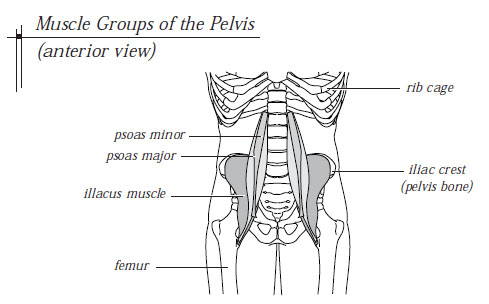
Martial art training can be recommended as an exercise program because of its supervised, progressive approach, emphasizing good technique and correct body position. Patience, discipline, and an ability to maintain focus in the present moment assist greatly in achieving the benefits of the martial arts exercise regimen. In other sports or activities, participants can become discouraged or forced to quit if the goal orientation or competitive atmosphere does not allow for individual progress within the group. It is important that the teacher be able to assist students in evaluating what is happening with their bodies during the training process.
Some discomfort occurs as a natural process of conditioning the body and adapting it to new movements and capacities. However, pain caused by injury or repetitive stress is an important signal from the body, and should never be ignored. Occasionally, (and particularly true of adult beginners), someone comes to the training with an old injury or condition that has not bothered them when inactive, but rears its ugly head as they begin training. By working in concert with their own health professional, a martial arts student and teacher should be able to modify their program and progressively bring that person to a greater state of health and fitness.
Having said all this, what do we really want from our spines? The simple answer is, everything. The spine is the hanger from which we suspend the rest of our skeleton, the muscles, fat, and tissue that flesh us out, and the clothes that we wear to hide our nakedness and give us “style.” The spine is the “rebar” that reinforces our structure within the foundation of feet, legs, and hips. Each vertebra is required to move independently yet also to work together with those above and below. In addition to this framework for the body to ride upon, the nerves running down the core of the spinal column communicate all the messages to and from the brain, limbs, vital organs, and sensory receptors of the body. We demand that it absorb constant vibration as we walk down the street, and bend, twist, and contort in all directions, while still protecting the central nerve core, the vital lifeline for our activity. It is no small task. It is obvious that the spine deserves every care we can give it to maintain both strength and flexibility. Enjoying the considerable range of motion of the human body requires constant maintenance.
Excerpt from “The Secret Art of Health & Fitness – Uncovered from the Martial Arts Masters” by Claudio Iedwab & Roxanne Standefer
© 2012 Illustrations by Claudio Iedwab
Issue 25
- Keeping in Line with Your Spine (Part 3)
- Keeping in Line with Your Spine - Exercises
« Click the Subscribe link on the left
